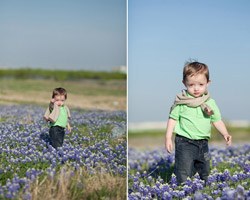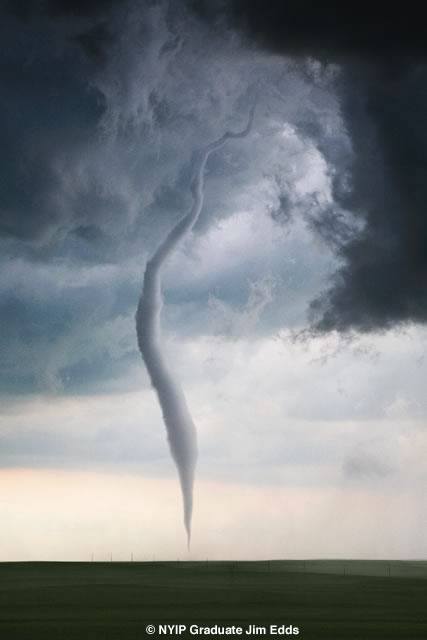
It's easy enough, I think, to photograph this world's ugliness; there's an abundance of it and it's all around us, almost everywhere we look. And I know that many photographers feel a compelling need to document the tawdry, violent, and often heart-rending aspects of sordid life.
That is that, of course, but sometimes in our search for the nitty-gritty we may overlook what is so obviously beautiful and miss great opportunities to show the rest of the world the truly delightful. And that brings me to the subject of photographing cats, those mysterious, lovely, intrepid adventurers that so many of us love and cherish but somehow never manage to photograph very well.
Before we photograph anything we have to set up guidelines just as we ought to do for everything else that is important. The New York Institute of Photography's famous Three Guidelines serve as points of departure for all photographs: the need for a strong subject or theme, the focusing of attention on the subject, and ultimately the simplification of the photograph by eliminating the unnecessary and retaining the necessary items. If we can closely follow these guidelines we can achieve our goals.

Let us start with the premise that all cats, by their very nature, are beautiful. Every one of them from the grungiest one-eyed, battle scarred, half starved alley cat to the long haired, exquisitely coiffed, pampered blue Persian ‚ÄúBest of Show‚ merits the attention of our camera's lens. So, we can say at the outset and without equivocation that we have very strong subject matter when we photograph a cat, any cat!
Easy enough, you say! Have powerful subject matter (the world of cats) and that's all there is to it. Just point your camera and shoot.
Well, I suppose that the natural beauty of the creature will somehow shine through. That's true enough. But you won't be getting the best possible results, I'm sure.
Let's consider some ways to focus attention on this incredible animal. Since we are only talking about photographing domestic cats, we have to think about the cat's size. It's a small animal, obviously, and you have to get close to it to see much of anything. It's rare that you will need a really long lens for the job at hand. Now and then, maybe, but most of the time a normal 50mm lens or a short telephoto one (85mm-135mm) will be fine. You will not often need a wide angle lens. Even a basket full of newborn kittens can be covered with a normal lens in most cases.

It will surely help if you can use a tripod but the sudden rapid movements of the cat may often preclude such a measure. But there will be times when a tripod can be used and should be used, times when the cat is resting or gazing out the window, for example. Cats, unlike dogs, are often patient especially when planning a strategic attack on an unwary goldfish or overly confident canary. I've seen cats wait long minutes before pouncing, thus giving you the chance to set up a tripod. Once the cat springs on the unsuspecting prey, the action is fast and furious and no chance for a tripod!
It is possible at times to make formal studio portraits of cats, replete with keylight, fill light, background light, and accent lights - the whole ball of wax including muslin backdrops and/or seamless paper. But you can't count on cat cooperation; he may feel like posing on one day and may run in terror the next! Certainly one of the cat's great charms is his utter unpredictable nature, at least I think so.
Or you may get this scenario: the cat waits patiently, very patiently, very cooperative while you get the studio set up. And then, without warning, will simply walk off the set. My son, a professional actor and director, would shout at the cat, ‚ÄúIt‚ a heck of a time to give your notice.‚ Perhaps his language might be a teeny bit saltier. But, then, cats don't have unions, do they? A run-of-the-play contract doesn't exist in the feline world.

Lighting can present a serious problem when photographing cats. Your white cat or your yellow tiger cat or your seal-point Siamese are light toned and reflect enough light in most indoor areas under normal room light conditions. Even your medium gray or your calico may reflect enough light so that good photographs can be made. But my Burmese is a very dark sable brown with no white markings. In the shadow areas he looks like a black cat in a coal bin at midnight (except, of course, for his eerie yellow eyes). In the sunlight he's a very rich dark brown with a very shiny coat that reflects adequate glints of light for photography needs.
Some cats may be spooked by electronic flash, others not. Mine isn't, but you'd better aim the flash directly at him. If you try to bounce the light off an umbrella, wall, or reflective surface, you not only have to open up the usual two-and-a-half stops but you may also need an additional two stops. Why? Because the subject is, obviously, much darker than normal.
Cats differ one from another not only in color and marking and in behavior but also in size. My Burmese is the same size as his cousin, the Siamese, but I've seen Maine Coon cats that were as big as cocker spaniels, or so it seems. And that means you may have to get a bit farther back in order to photograph the animal.
Cat fanciers are all aware of the many movements a cat has, each of them equally photogenic. The great balletomane and choreographer

Balanchine owned cats and once uttered, mournfully, that he wished his dancers could move as gracefully and as beautifully as his cats. Even those theater goers who loved the long running musical ‚Cats‚ freely admitted that the actors and dancers could only give weak imitations of the way that cats really move!
So, part of your job when focusing attention on your subject (the second NYIP Guideline) is to watch the subject's movements carefully and anticipate the next movement. For example, when your cat stretches forward with the weight on his front legs and paws, he then is going to do one of two things. He may either rock backward on his rear legs and paws or he may suddenly do his Halloween bit. You know, when he arches his back, assumes a fiendish look, and seems to a celebrated emissary from Hell! Any of these poses can be good subject matter.
A common expression is ‚let the part stand for the whole.‚ And this can certainly apply in photography as well, and in cat photography in particular. When it's time for my cat's meals, I place his bowl of Little Friskies just to the left of the kitchen sink. He immediately goes for the food and he is almost totally hidden by the sink and its cabinet. Except, of course, his rear end and long tail extend out beyond the sink. I've often focused attention (second Guideline) on him by photographing just his tail and rear end. I suppose one might call this a cat abstraction, a case of the part standing for the whole. Incidentally, this type of photograph seems to work better in black-and-white because the cat is almost black and the linoleum floor is white as is the sink cabinet.
I was talking a moment ago about the cat's tail. If the part can stand for the whole (frequently), what more expressive part of the feline anatomy is there than the tail? You could create an entire photographic essay on just a cat's tail alone! Its twists, it turns, its curves, its incredible movements ‚ a total expression of graceful art.

I would suggest that 35mm cameras, either rangefinder or single lens reflex, would be ideal for photographing cats. But certainly medium format cameras can be successfully used. And would you believe that the late and great Edward Weston photographed his many very active cats with an 8x10 view camera? Not in studio setups, mind you, but roaming around his house and yard. To show you the level of Weston's art, he was the recipient of the first Guggenheim Fellowship awarded to any photographer! Incidentally, he made a book of photographs about his cat "The Cats of Wildcat Hill".‚ It's out of print now, unfortunately.
If you do use artificial light ‚ electronic flash, floodlights, etc. ‚ be careful about ‚red eye‚ ‚ actually, with cats and other pets it‚ a variant ‚ ‚green eye.‚ These conditions are caused by having the light source to close to the camera and having the light reflect off the back of the cat's eyeballs. Raise your light source and move it away from the camera, and probably everything will be all right in most cases. Also, turn on a few room lights as well.

And now to the final NYIP Guideline ‚ simplifying the picture by eliminating the unnecessary and retaining the necessary. The cat is such an elegant creature that you can make wonderful photographs with nothing in them except the cat. You don't need to ‚gild the lily‚, so to speak. The cat's often just enough. But don't overlook the other possibilities of cats with people, with other animals, with interesting surroundings, etc.
The late writer Cleveland Amory said ‚Cats have enormous patience with the limitations of the human mind‚.
T.S. Eliot wrote that ‚A Dog's a Dog ‚ a CAT‚ a CAT.‚ The capitalization emphasis is Eliot's.
And John Wayne summed it up neatly in one of his Westerns. When one of the other actors mentioned that ‚Duke‚ owned a cat, Wayne answered ‚Listen, Mr., you don't own a cat; he just lives with you.‚
–Jerry Rice
Do you want to get your cat photographs published?
In addition to the numerous contests that you see listed in the various camera magazines or search engines there are certain specialty cat magazines. These regularly publish all kinds of cat photographs ‚ posed, unposed, what-have-you.

Here are a few that may particularly interest you:
CAT Fancy
CATS Magazine
I Love Cats
Cats and Kittens
Others include:
Pet Photographer, Humane Society Magazine,
and
Animal Rescue Magazine.
The Internet will help you to find the right addresses for these publications.






